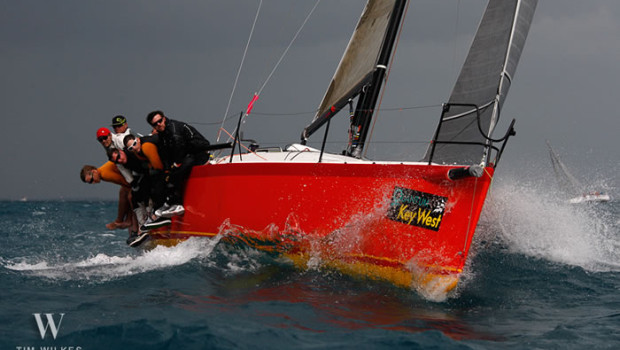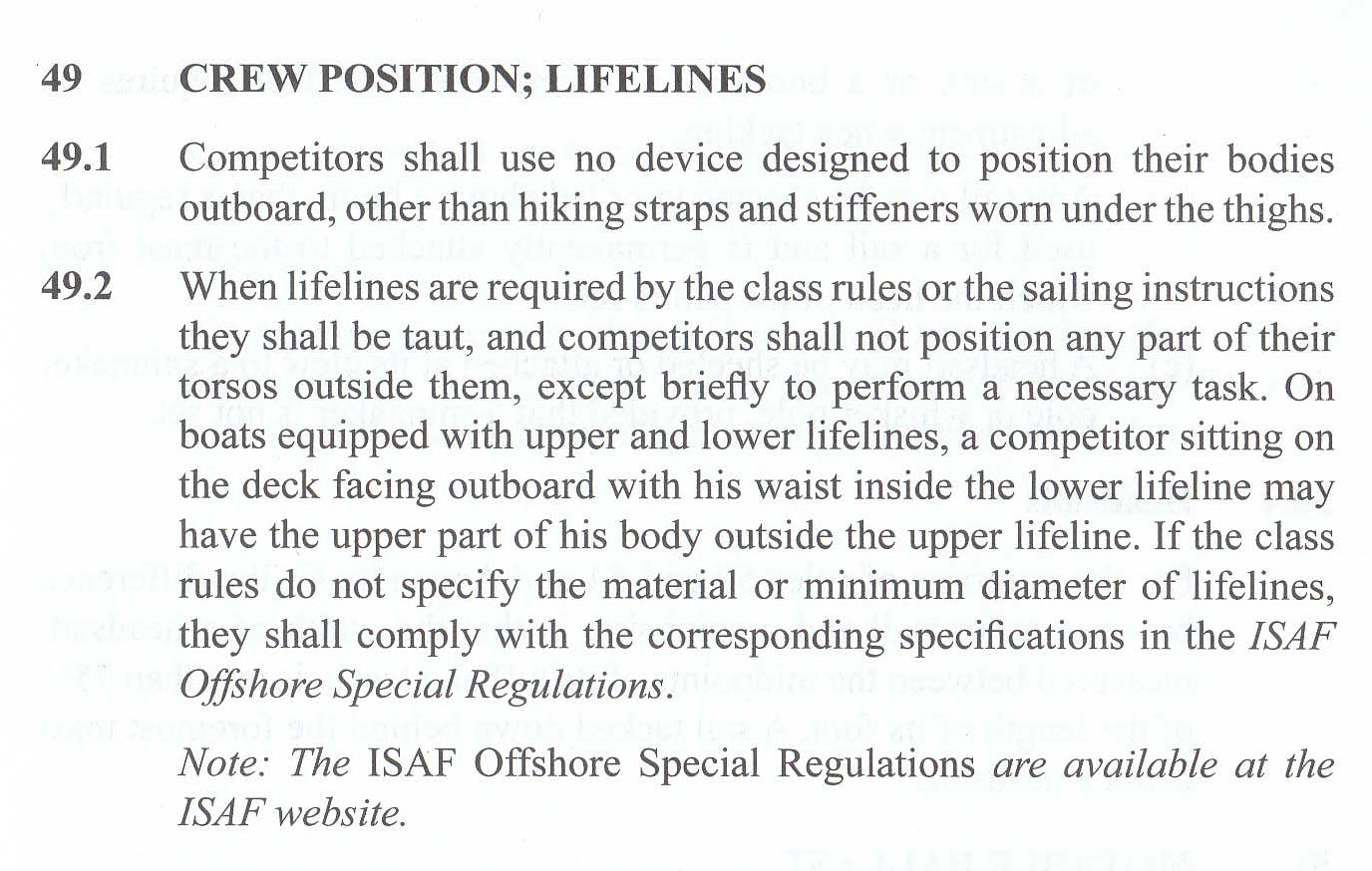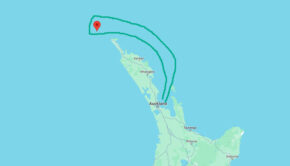How to regulate gut hiking
Published on April 7th, 2014
by Craig Leweck, Scuttlebutt
When the Racing Rules of Sailing decided, on boats equipped with upper and lower lifelines, to allow crew to have their waist inside the lower lifeline but their upper part of the body outside the upper lifeline, it opened the door to where we are today.
Crews now stretch their upper bodies to windward, leaning hard against the lower lifeline, to help ‘hike’ the boat when heeled. The problem is that this technique of ‘gut hiking’ or ‘taco hiking’ is in conflict with the very same rule that opened the door.
Rule 49.1 states that “Competitors shall use no device designed to position their bodies outboard, other than hiking straps and stiffeners worn under the thighs.” Lifelines are lifelines until they are used to extend one’s body outboard further than if the lower lifeline were not there at all. When that happens, the lifeline becomes something else.
The evolution of hiking on keelboats has hit a wall.
“Depending on if the Class rules have changed this particular issue, ‘gut hiking’ is breaking rule 49.1,” notes International Judge/ Umpire Jos M. Spijkerman. “But because of the allowance 49.2 makes, to sit in a more comfortable body position between the upper and lower lifeline, the moment the lower lifeline becomes a ‘device to position their body outboard’ is very hard to say in changing wave and wind conditions. As long as sailors accept this hiking practice from each other – no protest committee or judge will go there. If a class wants to get rid of this ‘uncomfortable’ practice, start protesting and it will get sorted out.”
The Melges 24 class rules circumvent the trappings of Rule 49 by making no reference to lifeline in their rules. Instead, the rules refer to the line that passes through the stanchions as a ‘hiking line’. One design classes don’t need lifelines, so the extreme hiking practice is allowable in the Melges 24 class.
However, for keelboat one design boats that also race under handicap rule, the handicap rules prevail.
The rules for the PHRF fleet of Southern California require boats to have a “fixed bow and stern pulpit, lifelines and supports”. One design class boats must fulfill this lifeline requirement, which then require crew to follow the requirements of Rule 49 (read: no gut hiking).
But as Matthew Knowles, a member of the US Sailing Racing Rules Committee, points out, the problem isn’t so much the people pushing the rule but the rule itself. “I’m not sure protesting is the right option here. The rules are not clear – at the extreme, there is a violation, and in more moderate cases there is not. Thus there is a line drawing exercise. Can we really expect juries to fairly and consistently take the second-hand evidence of witnesses and draw those lines in the proper places? I suggest a better rule is needed.”
Any motivation to address this issue is to improve the pleasure of crew participation. “Flat is fast, but this hiking is f’n painful, and not in a healthy ‘burn those muscles’ kind of pain,” shared Lauren McKenney. “I’ve had numb legs for a week after coming off 10 days at Key West Race Week.” Even in the Melges 24 class, which permits the hiking practice, it takes a commitment from the crew not easily found. “To be competitive, you nearly need to pay the crew,” observes past class world champion Dave Ullman.
Notable that the Melges 24 class recently changed its stanchion height to improve comfort. “The class has made it physically easier to compete, reeling in the hiking practice that has pushed people away,” stated class champion Bora Gulari.
The best solutions are typically those that don’t require rules. But when the sport is played at the highest level, rules are required. If a step is to be taken from where we are today, it will likely require an embrace of both the spirit of the rule, and better words to back it up.










 We’ll keep your information safe.
We’ll keep your information safe.